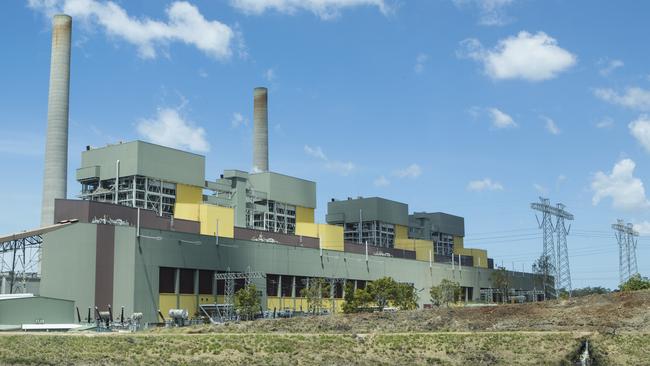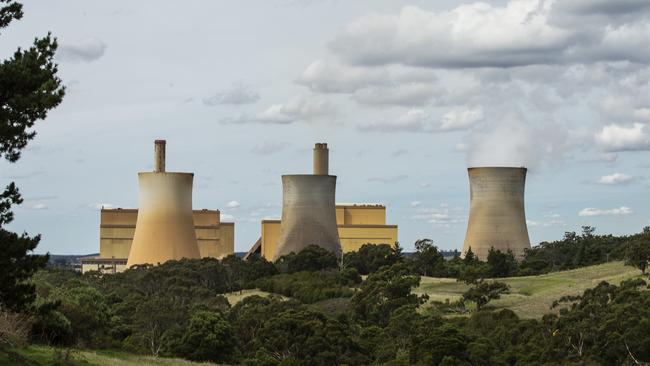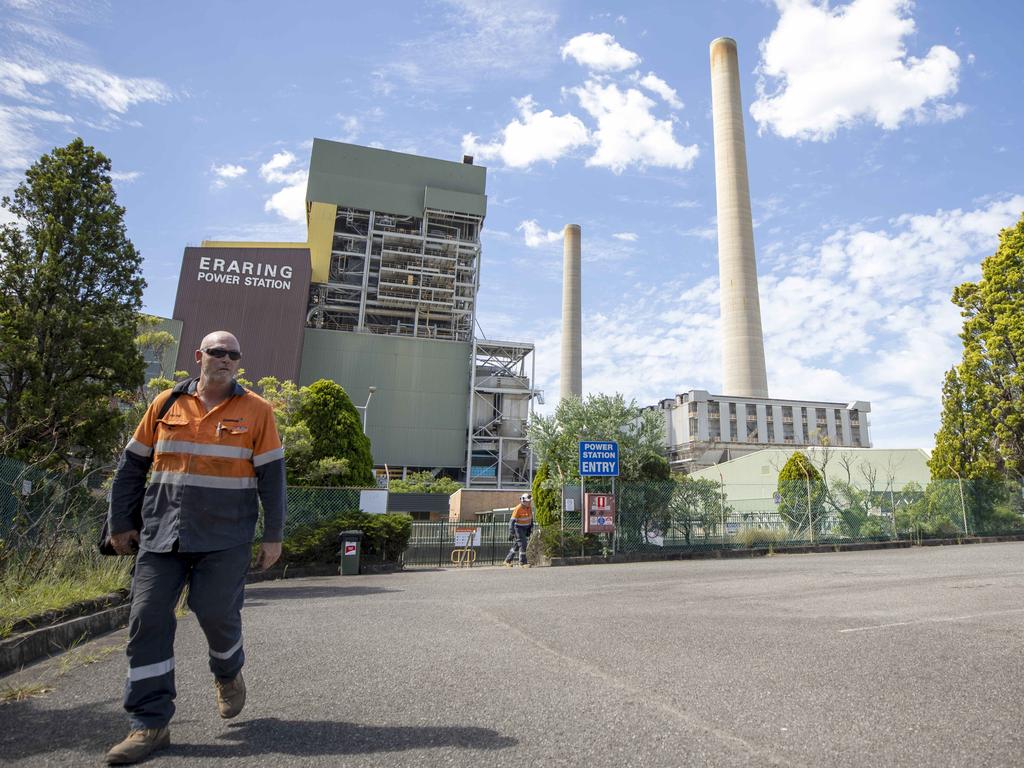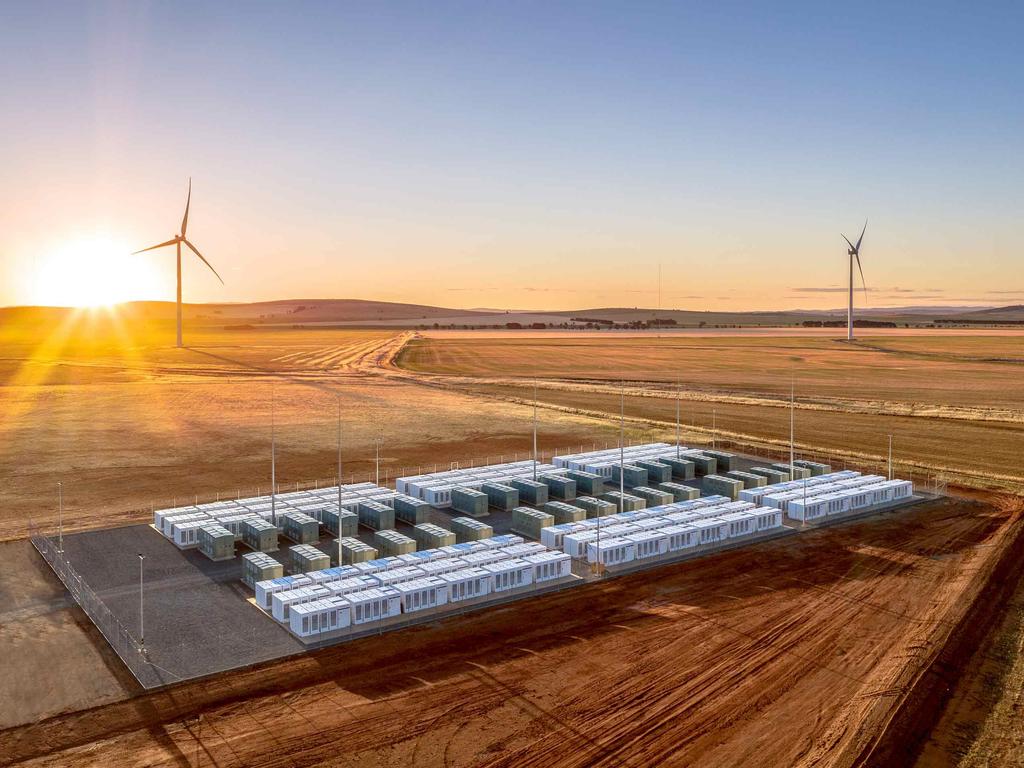States face higher blackouts risk Eraring coal plant closure hits energy grid: AEMO
NSW, Victoria and Queensland all face renewed pressure on electricity supplies with Australia’s largest coal plant set to close in 2025.

NSW faces an increased risk of blackouts by 2025-26, with Victoria and Queensland also set to be squeezed before the end of the decade due to uncertainty whether enough generation will be on line once Australia’s largest coal plant shuts down.
The decision by Origin Energy to accelerate the closure of NSW’s Eraring coal station up to seven years early by mid-2025 has forced the Australian Energy Market Operator to crunch fresh forecasts analysing how the exit of the plant, which accounts for 20 per cent of the state’s generation capacity, will hit electricity users.
AEMO said it expected “sufficient reliability” in NSW if the state government’s policies were delivered along with existing and committed projects ahead of the closure of Eraring in mid-2025.
It found that NSW faces a reliability gap or heightened risk of blackouts of 590 megawatts by 2025-26, four years earlier than the 2029-30 gap identified by AEMO in August last year in its previous electricity outlook report. While new generation such as EnergyAustralia’s Tallawarra B gas plant has been added, AGL Energy’s Hunter Valley gas turbine has been withdrawn by AEMO. Overall, 1083MW of committed capacity has been added in NSW since its previous report.
Victoria may also be juggling a 330MW shortfall from 2028-29, unchanged from last year’s forecasts, when EnergyAustralia’s Yallourn coal plant closes in 2028, while Queensland could be landed with a 770MW gap in 2029-30, higher than previously estimated, due to limited power supplies from NSW.
The risk of a shortfall in power supplies, known as unserved energy, has also increased for South Australia due to the unavailability of several gas power units, less supply from NSW and the planned Bolivar plant not yet deemed a committed project.
“The retirement of Eraring Power Station, without replacement investments, could lead to a reduction in the reliability of the national electricity market, particularly in NSW,” said AEMO’s executive general manager for system design, Merryn York.
Breaching the reliability standard is when forecast low levels of generation availability requires planned outages, known as load shedding, to protect the power system from the potential of blackouts.
A raft of new generation has been slated to replace the loss of Eraring, with Origin planning to build a 700MW battery on the same site to store renewable energy and the NSW government working with industry partners to develop a second 700MW “Waratah Super Battery” among measures to meet any shortfall.

Anticipated projects, including 1700MW of grid-scale wind and solar generation, and transmission developments, boost forecast unserved energy or the risk of a supply shortfall in NSW to within the reliability standard in 2025-26.
“If the pipeline of anticipated investments, as well as projects in the ISP and NSW government’s energy roadmap, proceed to expected schedule, then forecast reliability outcomes in the NEM would meet or exceed the reliability standard in 2025-26,” Ms York said.
AEMO noted” “Without additional investments beyond existing commitments, unserved energy in NSW is forecast to continue to increase, particularly after the retirement of Vales Point Power Station in 2029-30.”
AEMO said it would trigger the retailer reliability obligation which requires electricity retailers to enter contracts to meet their share of expected peak demand, if not enough generation or transmission capacity reached committed status ahead of the 2022 electricity outlook due in August. Some 138,000MW of proposed developments were not currently included in any of the forecasts, including a raft of storage projects that may further improve reliability, AEMO added.
Pressure will now grow on NSW to deliver its electricity infrastructure roadmap, which combines a series of renewable energy zones, transmission development and an investment safeguard to ensure enough energy and back-up power enters the grid as coal plants including AGL Energy’s Liddell and Origin’s Eraring close in the coming years.
Origin’s announcement followed AGL’s decision to bring forward the closure of its Bayswater generator in NSW from 2035 to no later than 2033; the closure of its brown coal-fired Loy Yang A plant, in Victoria, has been brought forward from 2048 to 2040-45.
AEMO, which runs the national electricity and gas system, has also forecast a risk of gas shortfalls under extreme weather conditions from next year’s winter in NSW, Victoria, Tasmania and the ACT, when average consumer demand is three times more than summer. The squeeze in gas markets emerged due to a one-year delay in bringing on Australia’s first LNG import plant, a project AEMO had hoped would allow it to sidestep a near-term deficit.
While AEMO does not forecast prices, the pressure on generation has emerged at a time of increasing wholesale futures this year due to supply outages and inflated coal and gas markets.
Energy Minister Angus Taylor has previously flagged the possibility of additional government intervention in the market if the private sector and the NSW government were unable to fill the capacity left by Eraring’s closure.
The closure of Liddell led to a decision to fund a $600m gas plant in the NSW Hunter region.
Australian Energy Market Operator chief executive Daniel Westerman said in February that the government’s plan to increase transmission capacity, including through the use of a battery, would give the state access to enough generation by the time of Eraring’s closure.





To join the conversation, please log in. Don't have an account? Register
Join the conversation, you are commenting as Logout